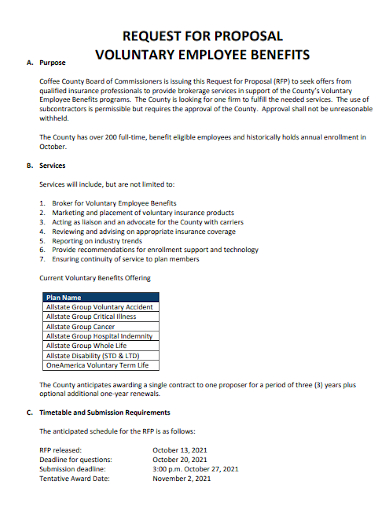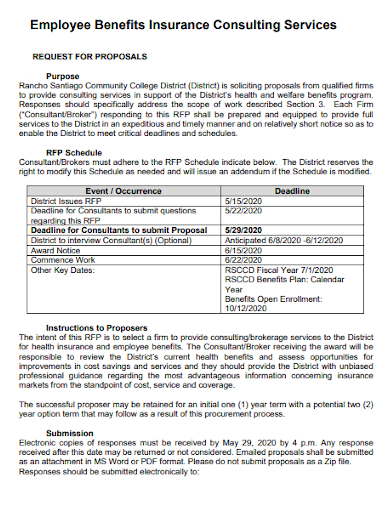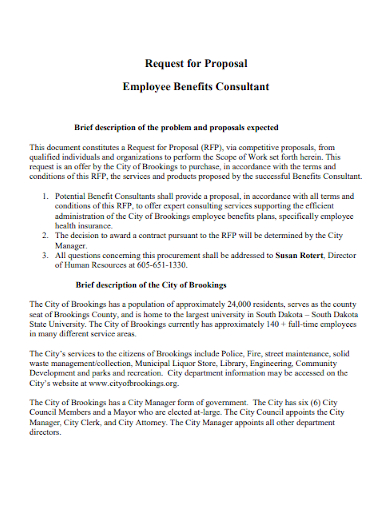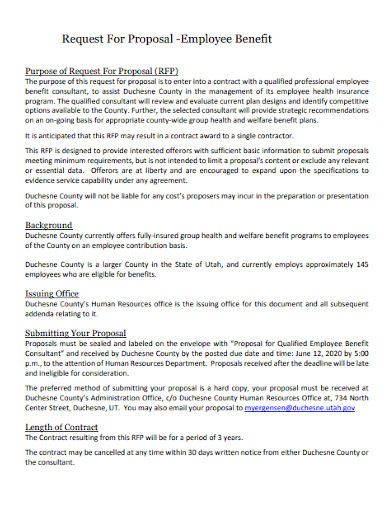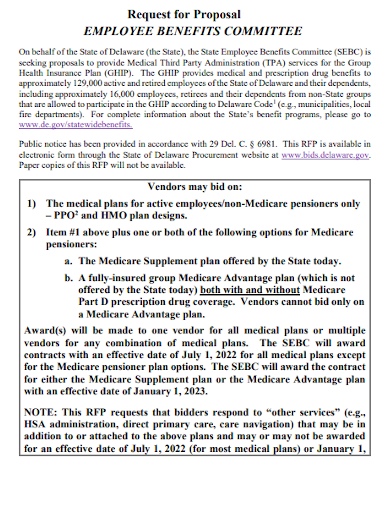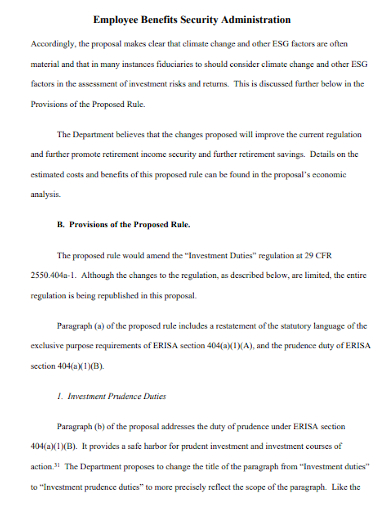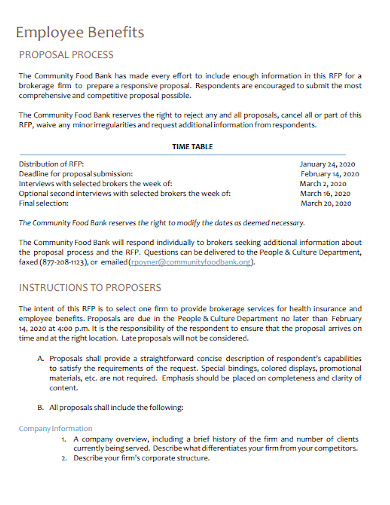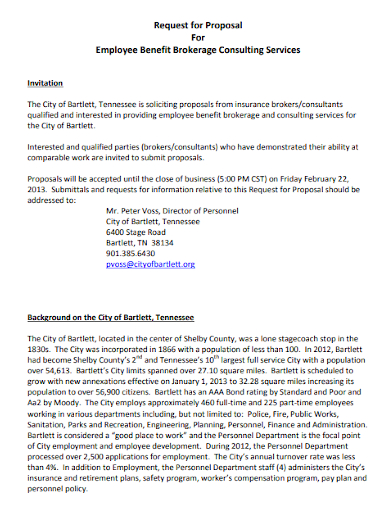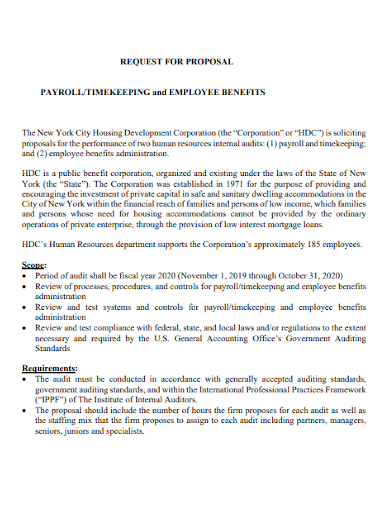Employee benefits are crucial not only for employees in your workforce but to also achieve your company’s goals and objectives. Offering benefits to your employees shows how you value them and that you’re invested in their overall well-being and their future, not only in your organization but also in other aspects of their lives. It helps motivate your employees to do better in their responsibilities since they know that you, as their employer, truly care about them as individuals with needs and not just disposable resources that you can replace anytime. Furthermore, a good benefits package can attract and retain new talent and even let you stand out from your competitors. That’s just enough reasons for you to improve your employee benefits plan. However, if you’re already thinking the same thing, it’s time for you to formulate the plan but you need to do it in a form of a proposal first for you to introduce it to your stakeholders and your employees. This article will guide you on how to make an employee benefits proposal.
10+ Employee Benefits Proposal Samples
1. Proposal for Voluntary Employee Benefits
2. Employee Benefits Broker Consultant Proposal
3. Employment Benefits Insurance Proposal
4. Sample Employee Benefits Proposal
5. Employee Benefits Consultant Proposal
6. Employee Benefits Request for Proposal
7. Employee Benefits Committee Proposal
8. Employee Benefits Security Administration Proposal
9. Employee Benefits Proposal Process
10. Printable Employee Benefits Proposal
11. Payroll Timekeeping Employee Benefits Proposal
What are Employee Benefits?
Employee benefits serve as indirect pay for employees in the workforce. Since the direct pay is their salary, the indirect pay does not necessarily involve monetary incentives. Examples of employee benefits include health insurance, retirement insurance, education loan, paid time off, flexible work arrangements, life insurance, financial planning resources, just to name a few. Employee benefits can greatly affect how an individual will accept job offers.
How to Make an Employee Benefits Proposal
1. Identify the Objectives
To come up with the objectives for your benefits plan proposal, familiarize yourself with the organization or the company’s goals and objectives of offering benefits that reflect both the employer and employee needs. This will help guide you in developing your own objectives. Furthermore, factors such as employee size, location, and industry of the organization should also be considered when you come up with the objectives as well.
2. Determine the Budget
You also need to determine the budget available in your organization for spending on benefits. Analyze the current costs and projected costs of maintaining these benefits for you to create a budget spreadsheet that will outline the annual benefits costs.
2. Conduct a Needs Assessment
Conduct a needs assessment for you to determine the best benefits that are appropriate for the needs of your employees. Your needs assessment could be interviewing and conducting surveys with your employer and the employees of the organization. This will help you analyze the existing demographics of your workforce to determine their various needs and find common ground on those. You can also review the current benefits plan if you have one. Analyze which aspects of it need to be improved and take note of it. Compile it along with your analysis with your co-employees to compare which benefits should be prioritized and which benefits are the most helpful in achieving your objectives. Knowing this will help you come up with a new plan for you to propose.
3. Formulate a Benefits Program
Once the needs assessment is done, it’s time to formulate the new benefits plan proposal. Using the data collected from your needs assessment, you can now formulate the new benefits that you want your company to offer. Include this information in your proposal. Include also how they align with the goals of the company and determine the estimated cost of providing the benefits to the employees.
4. Announce the Benefits Plan Proposal to the Employees
Gather all your employees when you announce your proposal for the new benefits plan that you would like to implement. Letting your employees know what the benefits plan will about helps improve it by welcoming their concerns, suggestions, and recommendations. Take note of all of those and consider their feedback to improve your benefits plan before you implement and execute it.
FAQs
What are the four major types of employee benefits?
The traditional four major types of employee benefits are medical insurance, life insurance, retirement plan, and disability insurance.
What benefits do employees value most?
The benefits that most employees value most are flexible hours of their work schedule, paid vacation time, and paid parental or sick leave.
If your benefits plan proposal is a success and you were able to implement it, congratulations! Don’t forget that your work on working with the plan doesn’t end there; you need to periodically review it to ensure if it’s implemented accordingly and if it still meets the organization’s objectives and employees’ needs. Try to develop goals and measurements to assess the plan and make adjustments whenever necessary. Changes in the business climate, the economy, and workforce demographics and environment can affect your benefits program so be sure to stay on top with these changes. Conduct employee surveys to check how effective the new benefits plan is to their advantage. To help you get started making the contract, download our free sample templates above to use as your guide!
Related Posts
FREE 11+ Engineering Project Proposal Samples in PDF | MS Word
FREE 4+ Racing Sponsorship Proposal Samples [ Team, Car, Driver ]
FREE 10+ Nursing Project Proposal Samples [ Community, Health, Clinical ]
FREE 11+ Student Council Proposal Samples in PDF | DOC
FREE 10+ Facilities Management Proposal Samples in MS Word | Google Docs | Apple Pages | PDF
FREE 8+ Joint Venture Proposal Samples [ Commercial, Real Estate, Construction ]
FREE 10+ Scholarship Proposal Samples [ Project, Grant, Sponsorship ]
FREE 10+ Computer Purchase Proposal Samples in MS Word | Google Docs | Apple Pages | PDF
FREE 10+ Network Project Proposal Samples [ Design, Security, Bank ]
FREE 14+ Accounting Proposal Samples in PDF | MS Word
FREE 10+ Church Event Proposal Samples in MS Word | Google Docs | Apple Pages | PDF
FREE 10+ History Proposal Samples [ Dissertation, Thesis, Paper ]
FREE 34+ Sponsorship Proposal Samples in PDF | MS Word | Pages | Google Docs
FREE 11+ Cost Proposal Samples & Templates in PDF
FREE 11+ Maintenance Proposal Samples in MS Word | Google Docs | PDF

